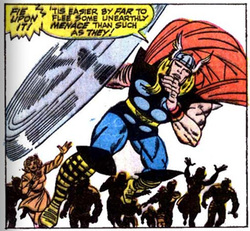
head-hacking delights of the Viking tales. And from there extended the Greek and Roman, then the Egyptian—all with similar themes and ideas, although some (like the Greek) with a touch more soap-opera than the others (who wasn’t Zeus’s kid
back then?).
I always felt that the British mythology had a sort of second-best feel to it. Perhaps that is the nature of how the British legends evolved, mixing in with the range of settlers/invaders that wandered onto our green and pleasant land over the years. The legends of the UK extend from the pre-Roman days of paganism and Celtic mythology, to the Dark Ages Arthurian legends and even more modern folk heroes like Robin Hood and Dick Turpin.
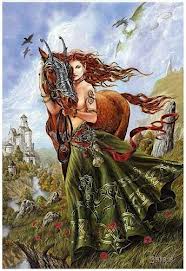
Merlin is every bit if not more fascinating than his king and friend. Merlin has never been off the radar since I was a child—whether in film, on TV, in literature. Geoffrey of Monmouth, the twelth century priest who wrote the first definitive account of King Arthur, created Merlin from a synthesis of Myrddin Willt (a legendary Welsh prophet with debatable sanity) and Ambrosius Auerilianus (a Roman-British general). Merlin was a synthesis himself, a character said to be half-demon, half-human (demon on his dad’s side, which made Father’s Day a rather memorable time each year).
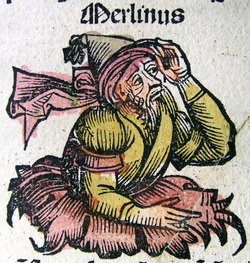
The original (old skool) Merlin featured in several of Geoffrey of Monmouth’s works was quite fluid in nature. From the original madman concept, he moved to one where Merlin was the son of a princess and a demon, brought by the king Vortigen to sort out a tower that kept collapsing. Beneath it were two dragons, in a lake, whose scrapping kept shattering the towers foundations. These were probably symbolic of the war between Celts and Saxons (and I wonder if this featured in the idea of the dragon in the TV series Merlin). Geoffrey tweaked the Merlin character a bit more after this—the story of Merlin helping Uther Pendragon sneak into Tintagel Castle to father Arthur with Igraine (who presumably didn’t have a migraine), and the idea he was buried at Stonehenge.
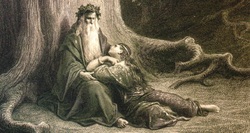
with others moulding the character. The thirteenth century adaptation of Arthurian legend, the Vulgate cycle (or Lancelot-Grail cycle) linked the Christian themes of the Holy Grail, the love story of Lancelot and Guinevere, and expanded Merlin as an advisor and mentor of a young Arthur. It was French in origin (like Lancelot), and was later modified again to play down the Lance & Gwen naughtiness and play up the Grail-bit.
Tom Malory’s La Morte D’Arthur became the definitive version of the Arthurian legends, probably because more modern versions (like TH White’s ‘Once and Future King’ draw on it). Malory apparently started his book whilst he was locked up in prison (it beats sewing mailbags or avoiding the showers, I suppose). Merlin isn’t in this as much as you’d think, being ‘bumped off’ fairly early, but playing a pivotal sage-like role. He’s still helping old Uthor getting into Tintagel, he’s helping the young king and the sword in the stone, he’s predicting all sorts about barons and even Queen Guinevere (if only Arthur had listened). Merlin meets his end (well becomes trapped) by Nimue pretty early on, after he accompanies her away from Camelot and overseas. She dumps him under a rock, and that’s that for Merlin in Malory’s book.
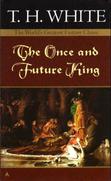
And now we have a young dark-haired Merlin, with an equally hunky Arthur, and a really odd (but compelling) version of the Arthur legend. Its ongoing popularity is a reminder that Arthurian legend is here to stay, in many media. The mature readers comic Camelot 3000 (drawn by Brian Bolland) by DC in the early 80s had an amazing futuristic vision of King Arthur, although we still have a bearded Merlin (agreeably with a suitably dark edge). So with so much Merlin in the world, who needs another version? Well, Merlin does pop up in the Infinity Bridge, but in a way which I’m certain hasn’t been seen before. And, of course, he has to have some guys to do the work for him... and they’re the (Nu) Knights of the Round Table.
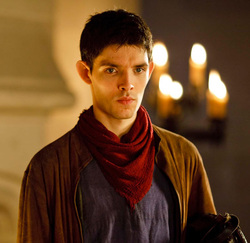
Bridge is coming out on a new publishing cooperative label, Myrddin. The imprint carries a wide range of genres—fantasy, steampunk, paranormal romance, YA, literary fiction and even some horror. So I’ll finish with a link to the new site, which Infinity Bridge will be sitting on very very soon....
You can check it out at http://www.myrddinpublishing.com/
Next time i'll be blogging about York, the setting for the Infinity Bridge....
 RSS Feed
RSS Feed